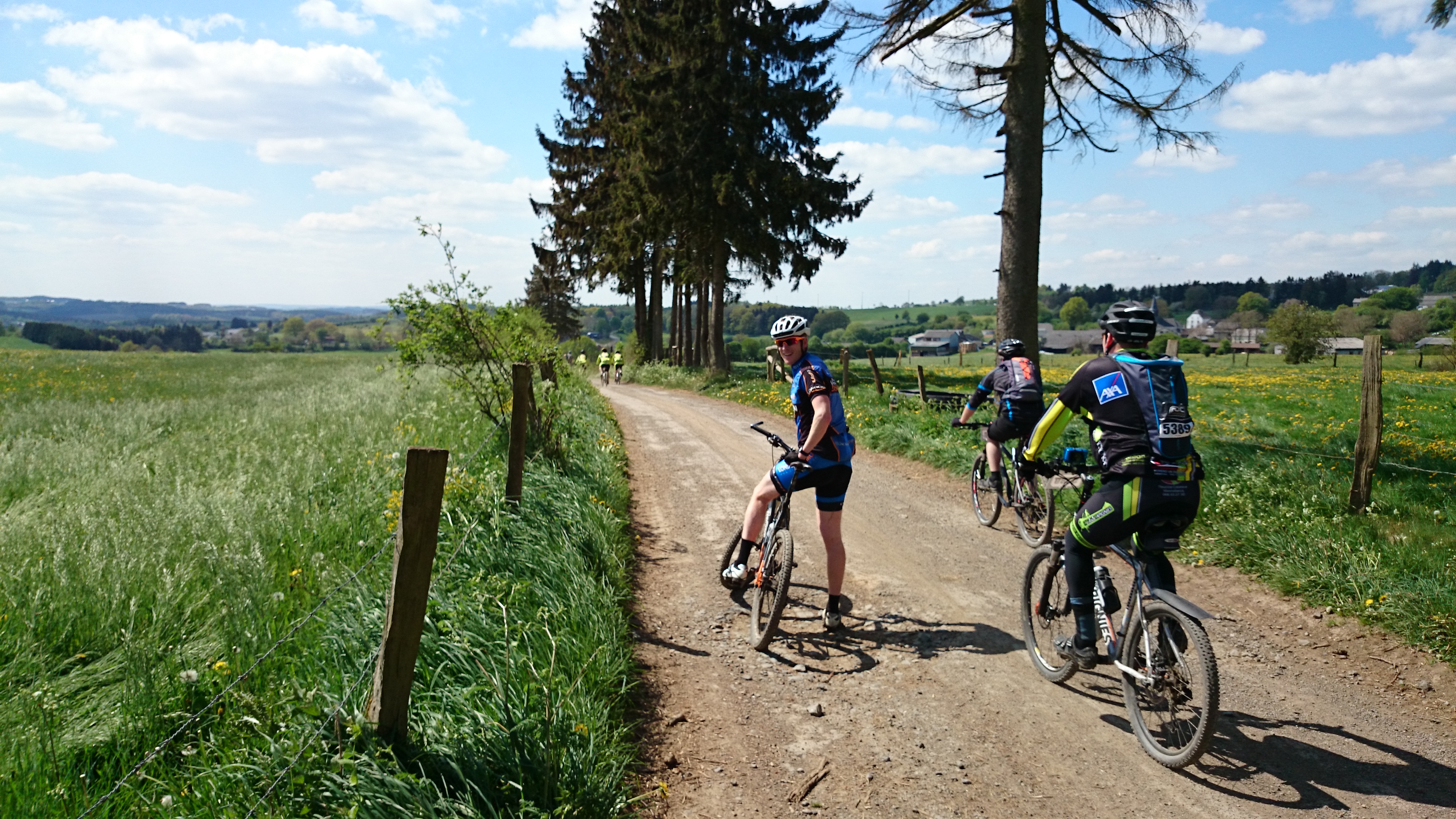Rolling hills. Lush forests. Small rivers meandering through narrow valleys. Picturesque towns with attractive squares and ruined castes. Sunshine. Dust. These were not things I was really expecting when I came to Belgium. But they were among the things I found when making the road trip from London to the legendary Houffalize for the first staging of the Roc Ardennes.
I did find a few of the things I was expecting – chips, mayonnaise, eurobeats, speculoos biscuits, an assortment of high-class baked goods, and lots of fast bike riders.
The combination of these expected and unexpected pleasures was a nice reminder of why marathon racing is so enjoyable. The racing can be brilliant, but as often as not it’s also just a good excuse to get to some parts of Europe or the world which you wouldn’t otherwise visit. The Ardennes wouldn’t have been high up my list, but it’s such an attractive part of the world, especially in broad sunshine. And combined with a timely trip to some First World War monuments and memorials, it made for a great weekend.
But what about the race? If this is how it runs in its first year, I’m impressed – no sign of teething troubles; instead a slickly run event on a fantastic course. This perhaps shouldn’t have come as a surprise – the race’s sister event, Roc d’Azur, has been running for years and is well regarded.
One fairly unpleasant aspect? The start. For a slow starter like myself, this was a part of the race best forgotten quickly. It started in town, uphill, and then took a sharp right up the brutal Cote de Saint Roch, well known from La Doyenne, Liege-Bastogne-Liege. The sign at the bottom of the road reads 14%; I’m pretty certain that it is upwards of 20% in the steepest middle section. It’s 0.8km long, so my first kilometre consisted mainly of being overtaken, before getting the diesel firing and pulling some of the same people back towards the top of the climb.
An oddity of the race was the apparent lack of gridding; there was an elite start pen, which looked like top pros only, and then all those behind, whether with UCI points or not, were lumped together in one big mass. Not a big problem in the end, because that climb made the selection before the race really started; but still a bit odd. One funny sight in the start pens was seeing Garmin-Sharp pro and Paris-Roubaix winner, Johan van Summeren, unceremoniously ejected from the front pen and put into the next one. He made an incongruous sight with his full roadie kit and fugly Poc helmet. He seemed to be riding a Trek, which was a bit unexpected; surely an Open (with the Cervelo-Vroomen connection) would be more suitable, or at least something other than a rival pro team’s brand?
Other than that painful start, the course was an absolute joy. Not loads of climbing (just over 2k), lots of singletrack, varied surfaces and some great scenery – bosky woods, meadows strewn with flowers, some stream crossings, roots, rocks, and best of all, very little mud. This was a super-quick course – the winner took only just over three hours to complete the slightly lower than billed 80km.
The high speed and decent field is revealed by the mere 17 minute gap between travelling companion Ben Thomas’ (Mountain Trax-Vauxhall) 20th place and my 60th. The winner was Danish champion Soren Nissen, by two minutes over BMC’s Luis Pinto, in turn a little under a minute ahead of Jiri Novak of Superior-Brentjens. The women’s event was won by Michelina Ziotkowska.
It’s always a pleasure to find the right riding companions; and I was chuffed to find myself riding the first 45km with, out of all the hundreds of people in the event, good pal Matt Bridge who had travelled down from Amsterdam for the occasion. Matt stopped at the feed to refill bottles and drop his saddle a couple of vital mm, but was shortly thereafter replaced by van Summeren, who, having suffered an early puncture and broken chain, was monstering his way back through the field. I managed a few km on his wheel before deciding that staying there might be detrimental to my chances of making it to the finish. It was particularly instructive, however, to sit behind him as he rode a rather uncomfortable section of flat, very rooty trail – precisely as if he was riding the cobbles, he simply churned an enormous gear and smashed his away across the section. Fun to watch a true pro in action, painful to try and replicate.
Overall the event managed to pull in around 4,000 riders for the various events spread over a few days. Apart from a few tricky moments with slower riders from one of the other events on the final singletrack descent into town, clashes between events were kept to a minimum.
This is definitely a race to return to; particularly as it is so eminently reachable by car for many northern Europeans. The Belgium Mountain Bike Challenge runs for three days in the same area in two weeks’ time; especially if the weather is anything like it was this weekend, those guys are in for a treat.

